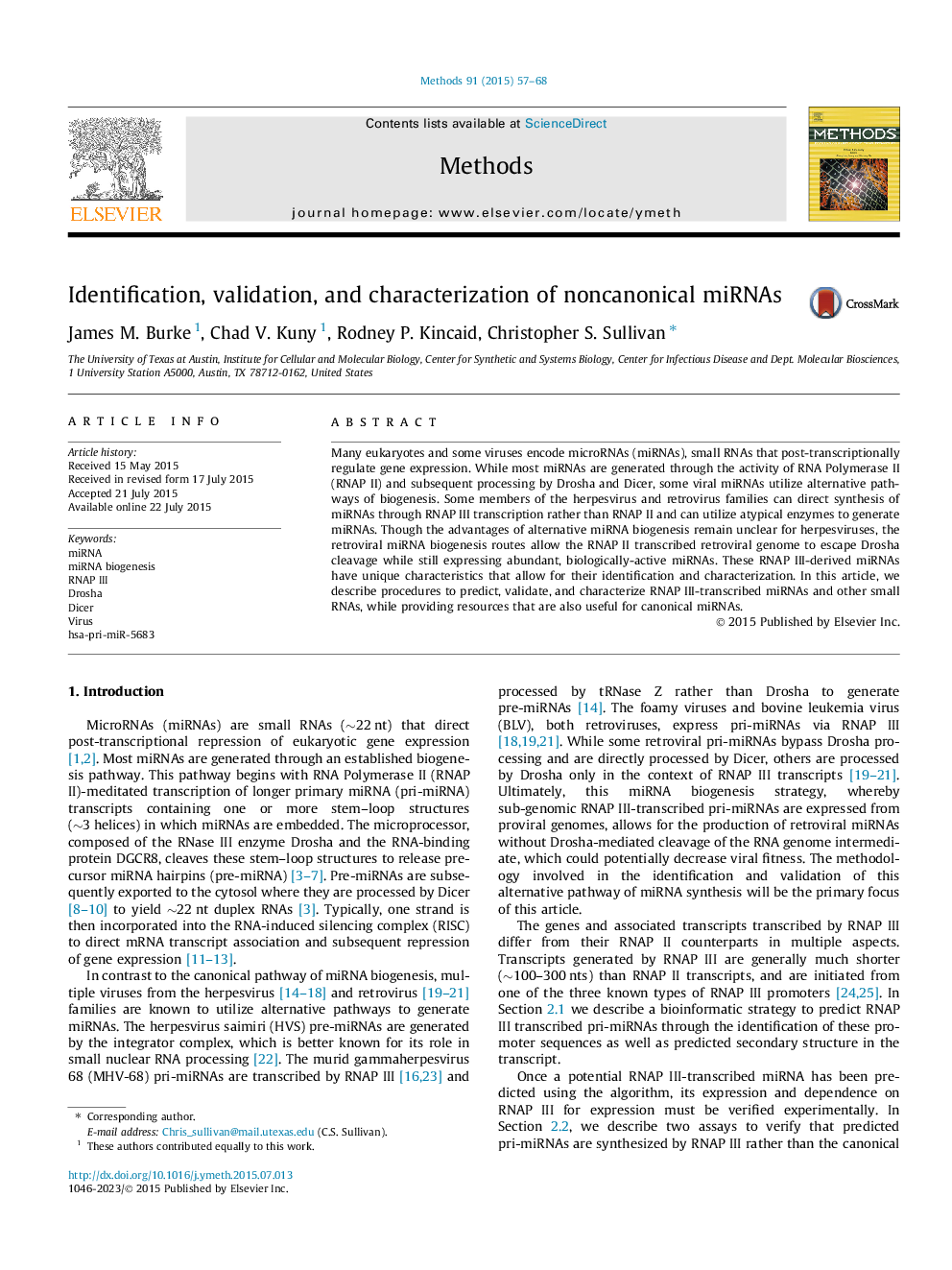| Article ID | Journal | Published Year | Pages | File Type |
|---|---|---|---|---|
| 1993230 | Methods | 2015 | 12 Pages |
•Some viruses utilize RNAP III instead of RNAP II to generate microRNAs.•RNAP III transcribed genes have different sequence features than RNAP II genes.•RNAP III transcripts have distinctive characteristics to identify them.
Many eukaryotes and some viruses encode microRNAs (miRNAs), small RNAs that post-transcriptionally regulate gene expression. While most miRNAs are generated through the activity of RNA Polymerase II (RNAP II) and subsequent processing by Drosha and Dicer, some viral miRNAs utilize alternative pathways of biogenesis. Some members of the herpesvirus and retrovirus families can direct synthesis of miRNAs through RNAP III transcription rather than RNAP II and can utilize atypical enzymes to generate miRNAs. Though the advantages of alternative miRNA biogenesis remain unclear for herpesviruses, the retroviral miRNA biogenesis routes allow the RNAP II transcribed retroviral genome to escape Drosha cleavage while still expressing abundant, biologically-active miRNAs. These RNAP III-derived miRNAs have unique characteristics that allow for their identification and characterization. In this article, we describe procedures to predict, validate, and characterize RNAP III-transcribed miRNAs and other small RNAs, while providing resources that are also useful for canonical miRNAs.
